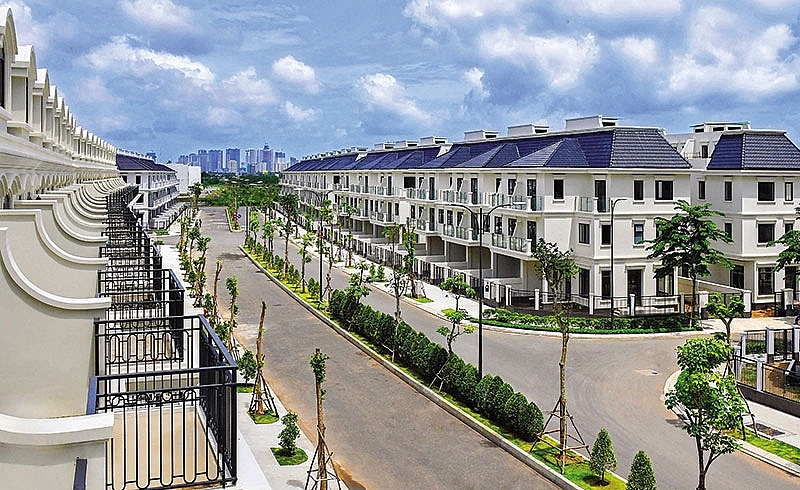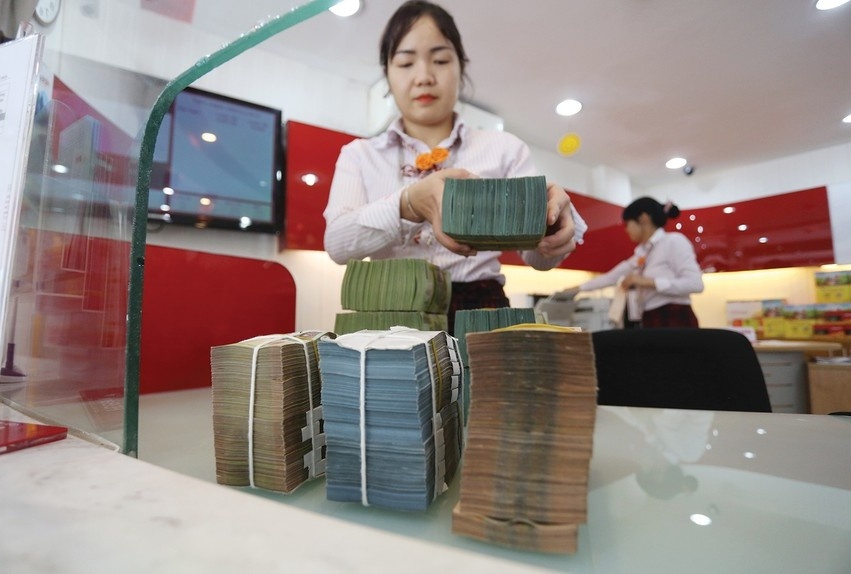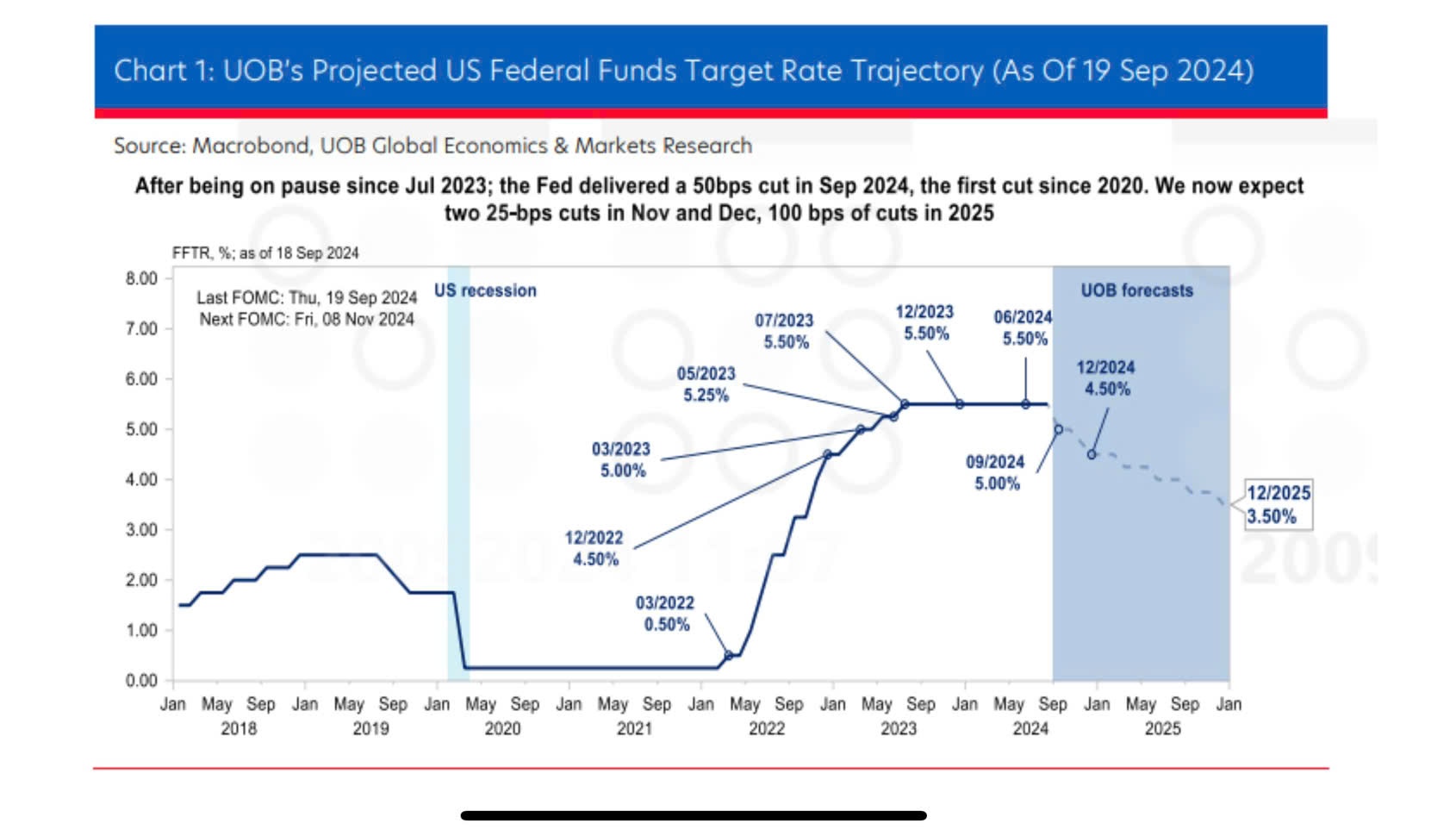SBV restricts real estate and construction loans
 |
| Document 563 sought tighter control over credit growth to meet the SBV’s target of 17 per cent for 2018, Photo: Le Toan |
According to experts, real estate firms need to apply more effort to cope with more stringent lending requirements starting this year, and with the coming influx of new supply.
The State Bank of Vietnam (SBV) recently asked credit institutions and local offices of foreign banks to give lending priority to production and business and to strictly monitor the acquisition of consumer loans that are used, in reality, for investment and trading in real estate and/or securities.
SBV’s recent Document No.563/NHNN-TTGSNH, issued in January by SBV, asked for tighter control over credit growth in order to meet its target. The credit growth target for 2018 was set at 17 per cent, lower than the growth rate of 18.17 per cent the year prior.
SBV Governor Le Minh Hung has instructed financial institutions to lessen the focus on real estate and construction and stabilise fund sources over medium and long terms.
“Financial institutions will also have to review regularly and trace the financial capacity and progress of real estate projects in order to have proper solutions when problems arise,” Hung said.
According to Tuan Bui, general director of Indochina Kajima, the real estate development platform of Indochina Capital and Kajima Corporation, the new document may put some pressure on banks to curb lending to real estate projects. However, the extent of the impact is difficult to estimate, given that there is no specific quota capping of credit allocated to the real estate sector.
“As the real estate and stock markets continued to experience strong growth in early 2018, SBV has warned financial institutions to monitor credit growth in these two sectors. The impact of Document 563 on the market may not be significant at present, as this is mainly a generic guidance document rather than a quantitatively restrictive legislation. Still, the market will have to watch out for more detailed regulations implemented by SBV in this area, especially if they find it necessary to impose stronger measures to control future lending activities,” said Tuan.
| Michael Piro Director, Indochina Strategic
Initially, we were not very optimistic with this news. Document 563 may be interpreted in the wrong way, suggesting real estate lending is risky and thus should be prohibited in general. However, we have to understand that the document is not issued to block all real estate lending. Instead, it emphasises the importance of risk management in lending activities to generate sustainable credit expansion without escalating the non-performing loan burden. Lending to good developers can provide healthy credit growth to banks and the reputation of the developers is currently the most crucial element that banks will consider when evaluating real estate loans. Therefore, this document will hopefully not affect reputable real estate developers who can deliver great products to the market. The timing may not be right for the ratification of Document 563, because if we look at credit growth during January and February of 2018, it has been lower than the levels experienced in 2017. Nonetheless, with this document, SBV is sending assertive signals to the market that lending will be carefully monitored, suggesting that although Vietnam is setting a GDP growth target of 6.8 per cent for 2018 (similar to 2017), the country will not pursue credit expansion by all means to achieve the GDP target. Nguyen Tri Hieu Economist
As with any other SBV-issued circulars or documents, Document 563 will certainly have an impact on the local real estate market. Given the tightened rules on the use of consumer credits for the purpose of investing in the real estate business, banks are warned to revise their loans allotted to the high-risk real estate sector. I suppose we might not be able to see at this stage to what extent banks will follow this instructions and how the real estate market will be affected. Nevertheless, we do know that banks have set their target credit growth for the year, and such targets will take in credit for the real estate sector, including lending for real estate investment or business, for property purchase, housing renovation, and housing construction. The real estate sector, as such, would remain a meal ticket for banks in terms of a steady source of income, and a contribution towards their set credit targets. At present, real estate credit is sorted for commercial purposes, whereas property purchase, housing renovation, and housing construction are considered consumer credits or on an individual scale. Combining them together, the total would be large and in my view, this will be an indicator for how the capital is actually flowing into the real estate sector, and thus act as a guide for the central bank to monitor its credit target. |
In response to VIR’s inquiry about which segments the new document would have the most impact on, Tuan said that high-end and luxury products would be most affected if more stringent credit controls are applied.
Barry Weisblatt, head of research at Viet Capital Securities JSC (VCSC), stated that the differences between mortgage lending and lending to property developers must be cleared.
“SBV grants special treatment to mortgages by giving them a lower risk weighting than normal loans. That has not changed following Document 563’s issuance. Property developer lending has always been subject to a risk weighting treatment, even before Document 563. That is why most property developers get customers to pre-pay for the property during construction,” Weisblatt told VIR.
He added that for unsecured consumer finance, in reality a bank cannot do anything to use the funds. “This sort of money does not go into real estate, but it might go into the securities market,” he cited.
In fact, bank credit is still directed towards real estate, especially the segment of home loan customers. Also, thanks to better real estate liquidity, banks can better handle bad debts, thus freezing the credit flow.
Nevertheless, since the real estate market has always consumed huge capital investment – and not all investors are financially strong – many experts are worried that credits for the real estate sector will breed more bad debts for banks.
Economist Tran Du Lich said that the market needs to enact selection and only investors with sufficient financial strength will survive, while those relying heavily on bank loans will not last long.
“This is also the reason that we need banks’ guarantees in real estate projects. Given the direction SBV is headed and the risks of pouring money into this sector, many banks are more cautious about lending,” Lich said.
According to SBV, total outstanding loans for real estate investment and business activities reached VND471.02 trillion ($21.41 billion) at the end of last year, accounting for 6.5 per cent of total outstanding loans of the economy. This ratio decreased from 7.7 per cent in 2016.
At the same time, SBV has taken measures to exert strict control over credits in real estate, by way of regulating safety rates and the misuse of short-term loans for medium- and long-term loans.
This SBV roadmap has been in effect since early 2015 – encompassing Circular No.36/2014/TT-NHNN (dated November 20, 2014), and Circular No.06/2016/TT-NHNN (dated May 27, 2016) – having gradually reduced the aforementioned misuse of short-term loans, and increased the risk coefficient for real estate assets.
Circular No.19/2017/TT-NHNN, issued by SBV late last year, put forth the target of reducing the use of short-term capital for medium- and long-term loans to 45 per cent and 40 per cent, respectively, in 2018 and 2019.
What the stars mean:
★ Poor ★ ★ Promising ★★★ Good ★★★★ Very good ★★★★★ Exceptional
 Tag:
Tag:
Related Contents
Latest News
More News
- Wink Hotels to revolutionise the hotel industry (June 30, 2022 | 10:00)
- Wink Hotels revolutionises new breed of hotels for travellers (June 27, 2022 | 09:49)
- Getting back in the travel groove for 2022 (January 04, 2022 | 10:27)
- Bank and real estate giants team up (April 26, 2021 | 09:51)
- Indochina Kajima commences Phu Yen luxury tourism project (April 05, 2021 | 13:04)
- Foreign investment continues to flow into hospitality market (March 15, 2021 | 11:17)
- Satellite towns with purpose (January 19, 2021 | 11:00)
- Wink Hotels’ first hotel opening in Ho Chi Minh City (January 19, 2021 | 10:59)
- Seizmic shifts in Vietnamese real estate market (November 26, 2020 | 12:34)
- Wealth creation amid the coronavirus conundrum (November 09, 2020 | 08:20)

























 Mobile Version
Mobile Version